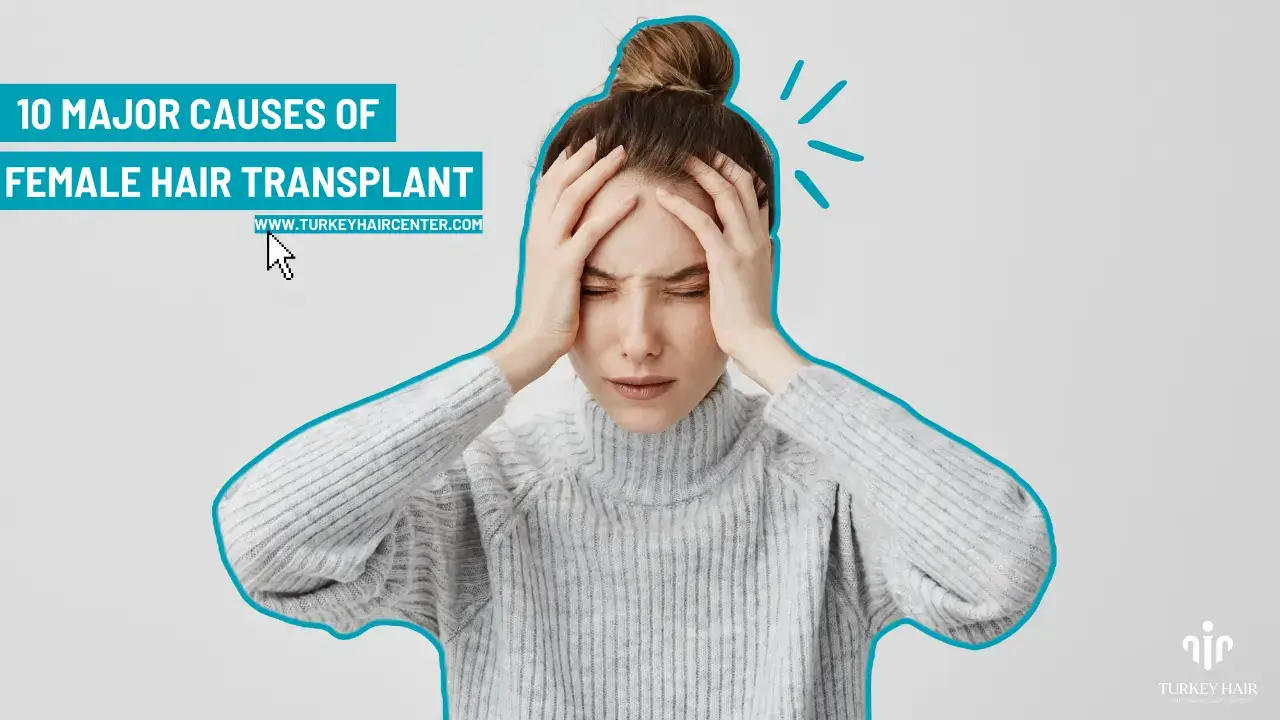Female hair loss can be caused by a multitude of factors, but do not fear, there are solutions available! Let’s delve into hair loss in women!
Understanding the Primary Causes of Female Hair Loss
If you are a woman who has ever observed an upsurge in hair shedding, you might be wondering what is up. Humans typically shed fifty to one hundred individual hairs every day as part of the normal cycle. In short, old hairs fall away, allowing new ones to develop.
When this equilibrium is disrupted when more hair falls out than is replaced hair loss becomes a problem. It is a worthwhile issue to investigate because it may influence everybody. So, let us take a deeper look to see what is going on and what may be causing it.
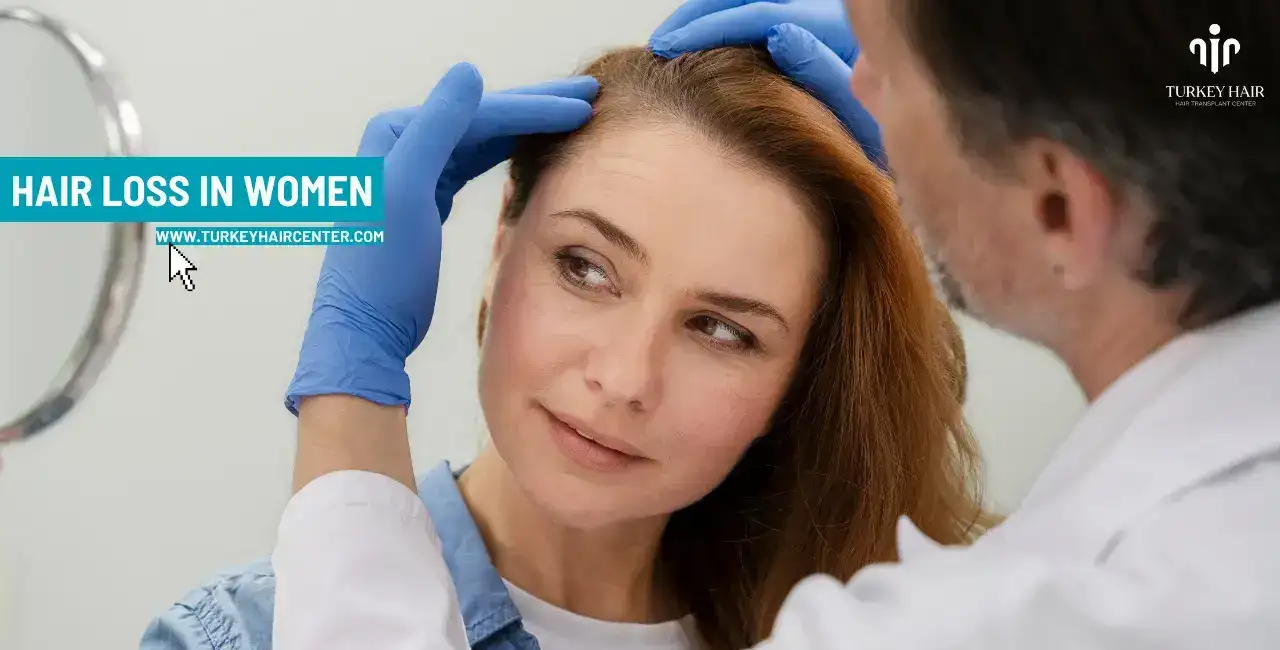
Recognizing Women’s Hair Loss Symptoms
The hair loss in women does occasionally scream; on at times, subtle indications reveal its presence. Here are some common warning signs to keep an eye out for:
Shedding
You might observe that when you brush or comb your hair, more strands are left behind than usual. It is shedding if your hair is communicating with you.
Hair Everywhere
It looks that your hair has grown a proclivity for accumulating on your clothes, pillows, towels, and even in your bathtub drain. It is like an unwanted guest who hates to leave.
Thinning Locks
One of the more obvious symptoms is when your once-voluminous hair begins to thin. It’s like if someone reduced the volume on your hair.
Visible Scalp areas
One of the most worrying symptoms is the ability to view areas of your scalp. It is like getting a look behind the curtain.
Hair loss in women frequently causes thinning in the middle third to half of the scalp, whereas in men, it usually affects the forehead or crown of the head. When you pull your hair back, you may notice that more of your scalp is visible, your part may gradually spread, or your ponytail does not feel as full as it used to. It is your hair’s way of alerting you that something is wrong.
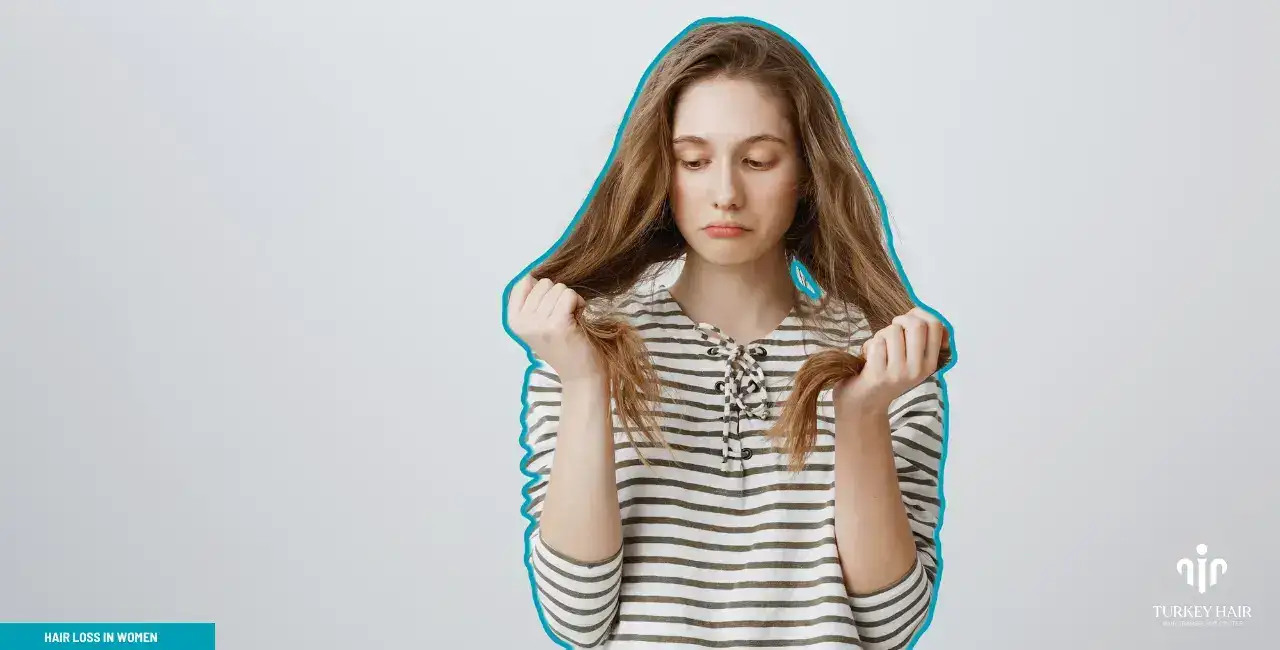
What Is the Most Common Cause of Female Hair Loss?
The primary cause of hair loss in women globally is female pattern baldness, additionally referred to as androgenetic alopecia. This type of hair loss in women is highly genetic and passes on either from your mother or father. Approximately 30 million women are affected.
It usually occurs in your late fifty years or your early-60s. Nevertheless is possible to become conscious of it as early as their late teenagers, but the earlier it appears, the more severe it is normally. Menopausal hormone changes can also have an effect on this type of baldness.
Your follicles gradually contract and the growth cycle is shortened with this form of hair loss. Hair falls out naturally. However, new hairs regrow at a finer, thinner pace. Some follicles may eventually stop generating hair.
If you have female pattern baldness, you probably will not lose all of your hair. However, if left untreated, symptoms could worsen over time.
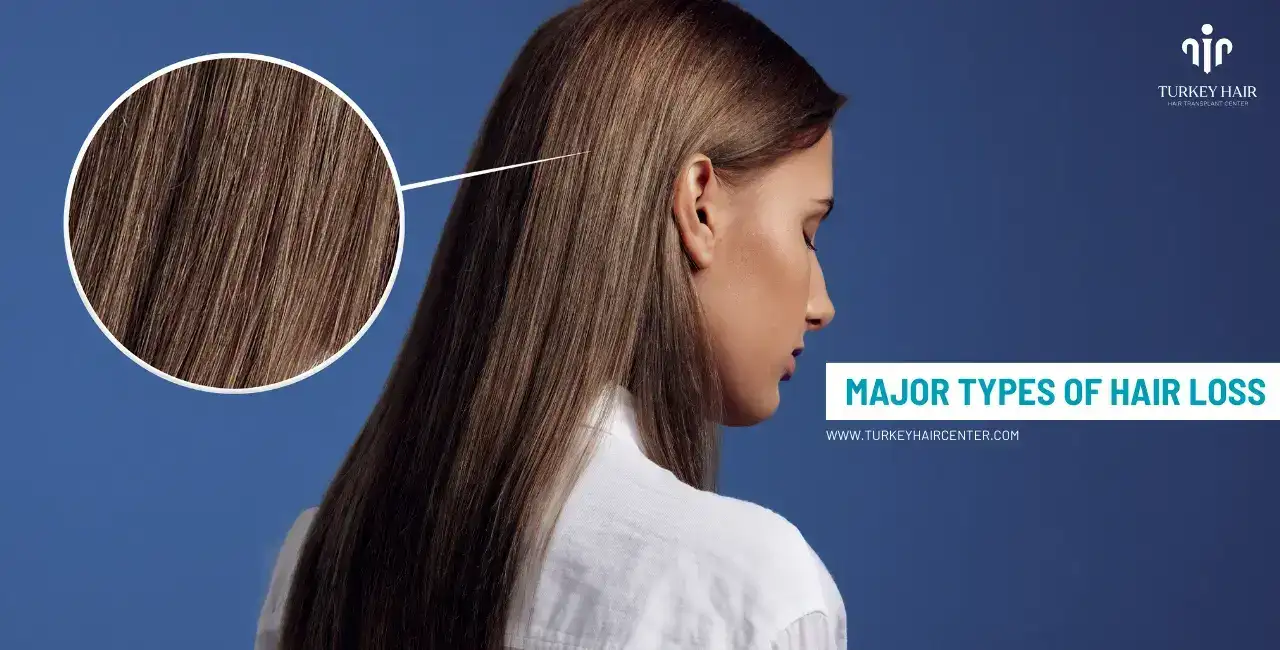
Additional major types of hair loss include:
Effluvium anagen
This is the term used to describe hair loss brought on by drugs that damage your hair follicles. Hair loss in women can occur within the first few weeks of starting cancer treatment due to the harmful effects that radiation and chemotherapy therapies for the disease can have on hair follicles. After your therapy is over, hair growth often starts a few months later.
Telognuvio
Telognuvio type of hair loss occurs when many follicles enter the telogen phase, also known as the resting phase, but do not enter the active growth phase again. Therefore, hair loss does not result in replacement. It might follow from:
- Several diseases
- Stress may be physical or emotional.
- A diet deficient in a certain vitamin or mineral
- Several medicines
- hormones from pregnancy, for example
- You typically do not lose all of your hair as a result. The majority of the time, it is transient, although it occasionally lasts for months or years.
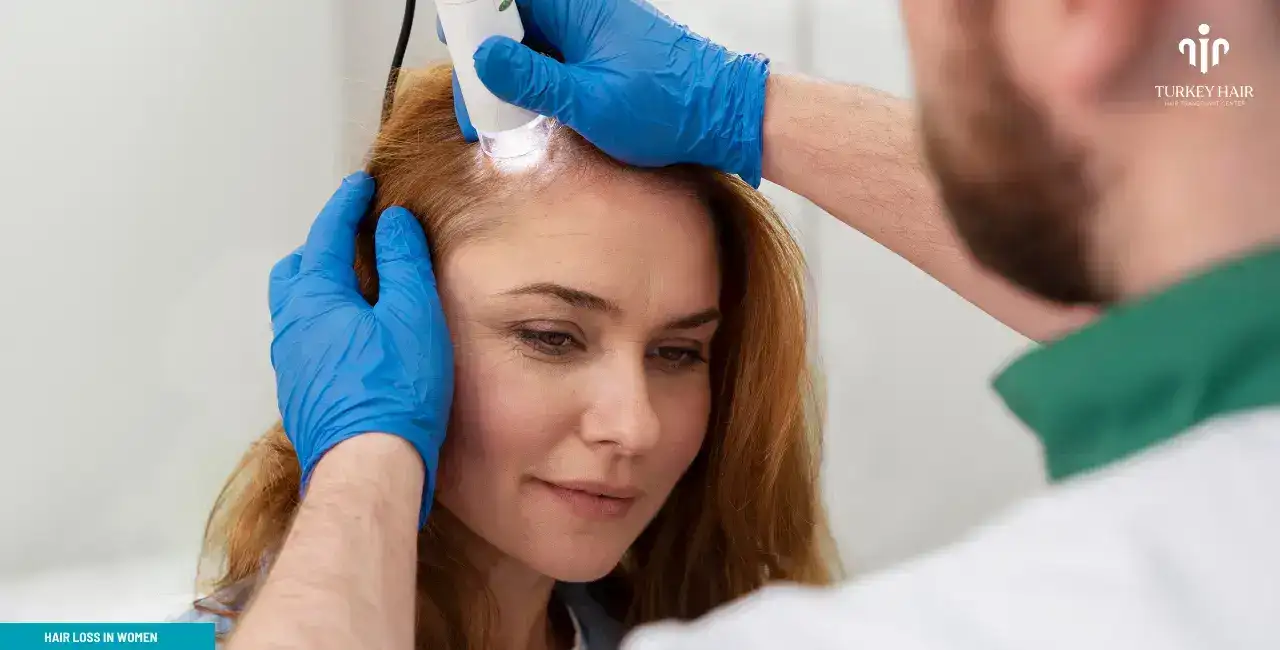
Conditions that Lead to Hair Loss in Women
If you experience sudden hair loss in women, something other than your genes, such as a medical condition, is probably at blame.
A variety of conditions can cause hair loss. The most prevalent ones include anemia, thyroid issues, and pregnancy. Others consist of:
- Ringworm, a contagious infection that can result in bald areas,
- Seborrheic dermatitis and psoriasis are two other skin disorders
- Scalp maladies
- Sexually transmissible diseases
- Extreme fever
- An autoimmune condition known as alopecia areata causes round bald patches by having your own immune system assault your hair follicles.
Moreover, a multitude of elements can contribute to hair loss in women. Normally, individuals shed around fifty to one hundred hairs each day as part of their hair’s natural rhythm. However, when this harmony is disrupted and more hair departs than regenerates do, it raises concern. Causes of female hair loss manifests itself through heightened shedding, hair appearing ubiquitously, weakened locks, and exposed scalp regions. The most prevalent instigator is female pattern baldness, also known as androgenetic alopecia, which influences approximately 30 million women in the U.S. It is rooted in genetic and hormonal transformations.
Additionally, three other substantial sources of hair loss in women are effluvium, anagen, and telogenuvio, which are frequently provoked by medications, illnesses, stressors, or hormonal fluctuations. Anaemia, thyroid challenges, pregnancy, skin irregularities, infections, autoimmune maladies, and an array of other factors can all spark hair loss.
Briefly, causes of female hair loss can trace its origins to genetics, hormonal fluctuations, medications, infections, or skin anomalies. The recurrent culprit is female pattern baldness, which affects millions of American women. Mastering the intricacies of female hair loss causes and symptoms is fundamental for precise diagnosis and treatment.
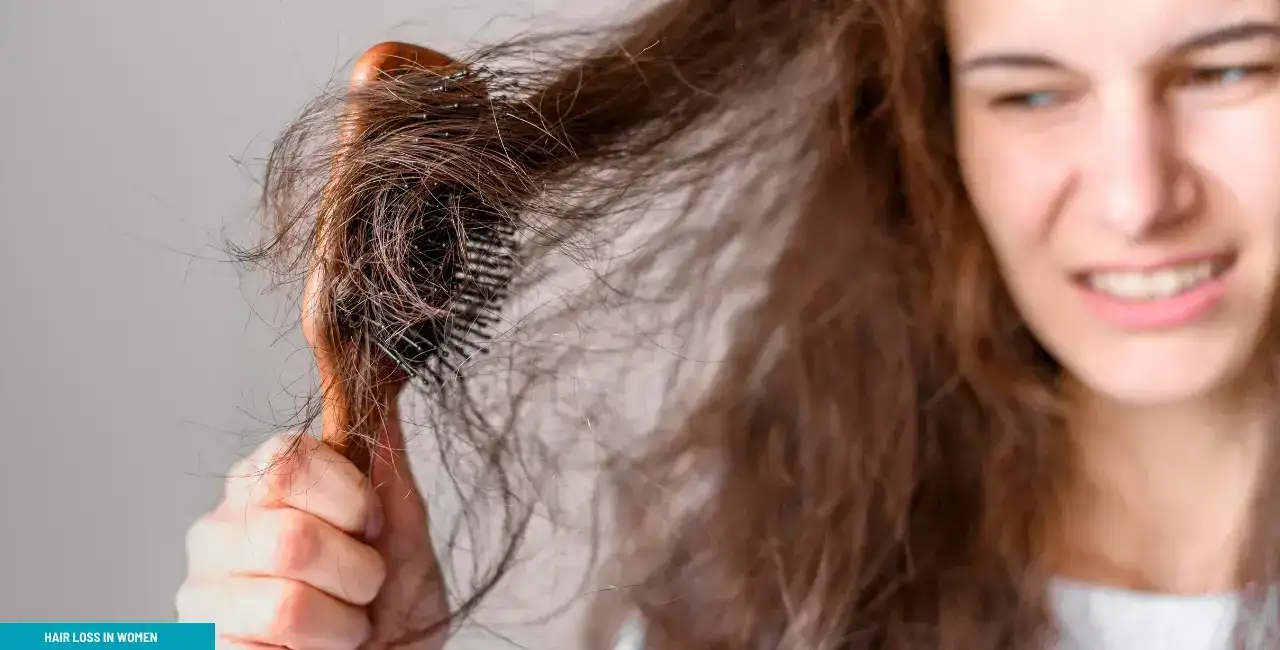
General Information and Main Causes of Female Hair Loss
Female hair loss can be a very complicated jigsaw with many moving parts. The following are some of the main causes of hair loss in women:
- Female Pattern Baldness (Androgenetic Alopecia): This condition is something akin to the heirloom that nobody really wants. Here, genetics play a significant influence and frequently cause a widespread thinning of hair across the scalp as opposed to the traditional male receding hairline. The plot involves hormones, especially unfavorable androgens like DHT.
- Hormonal Rollercoaster: A woman’s hormones frequently affect her life, including how her hair looks. Hair density can occasionally vary as a result of significant hormonal changes that take place during life transitions including pregnancy, delivery, menopause, or illnesses like PCOS. It is comparable to how your hair reacts to these changes.
- Medical Conditions: On sometimes, your general health—rather than your hair—takes center stage. The natural growth cycle of your hair might be impacted by illnesses like thyroid problems (either too much or too little activity), autoimmune diseases like alopecia areata, or persistent health difficulties.
- Pharmaceuticals: It is crucial to understand that several medications might cause female hair loss, which is one of them. Blood thinners, various antifungal drugs, chemotherapy treatments, and even specific antidepressants have been associated to this problem on occasion.
- Stress: Oh, stress, you uninvited guest at life’s celebration. It can cause telogen effluvium, a kind of hair loss. It disrupts your hair’s normal growth cycle, causing it to fall out more than it should. What is chronic stress? It has the potential to exacerbate the situation.

- Nutrient Shortages: Your hair needs its fair share of nutrients to stay in tip-top shape. So, if your diet is lacking in essentials like iron, zinc, biotin, and certain vitamins, your hair might decide to stage a protest.
- Hairstyling Habits: Your hair is not a fan of extreme styling. Using heated styling tools too often, going for tight hairstyles like braids or ponytails, or getting frequent chemical treatments – it can all take a toll on your precious locks.
- Aging: As the years go by, your hair naturally gets a bit thinner. It is just part of the aging process, but it is not quite the same as male pattern baldness.
- Hair Ties and Styles: Have you ever had a ponytail or braids that were a little too tight on your hair? Your hair can respond, and it will not be thrilled about it. Your hair appears to be saying, “That’s enough!”
- Skin Issues: Imagine your scalp as the battlefield, and dermatitis, psoriasis, and other skin diseases as the unwanted guests. If you do not kick them out, they could make your hair’s roots endure a really harsh environment and lead to hair loss.
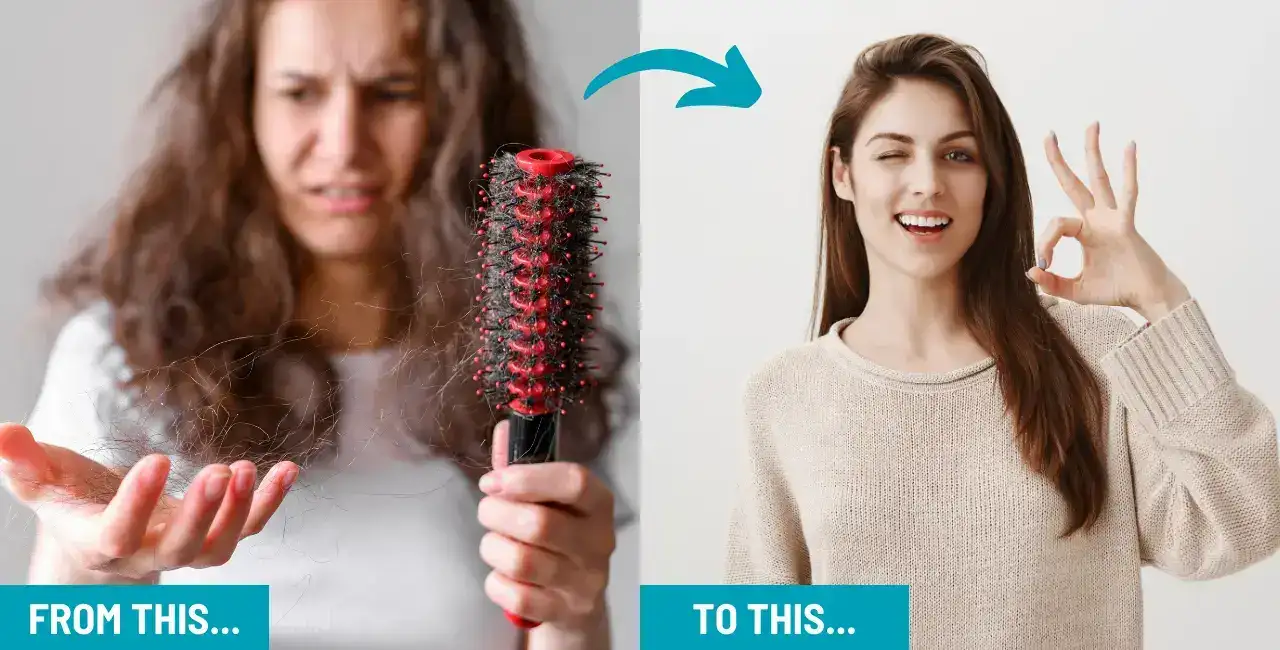
Therefore, what does it all mean?
To summarize everything spoken thus far, you have only had a taste of what could produce a hair tornado, especially if you are a woman. A mix of factors, such as ingredients in a meal, can induce you to think your future and look. If your hair begins to conduct its own little dance, do not be hesitant to consult a dermatologist or a healthcare specialist. They act as hair detectives, ready to uncover the mystery and design a strategy to restore your hair to its former glory.
